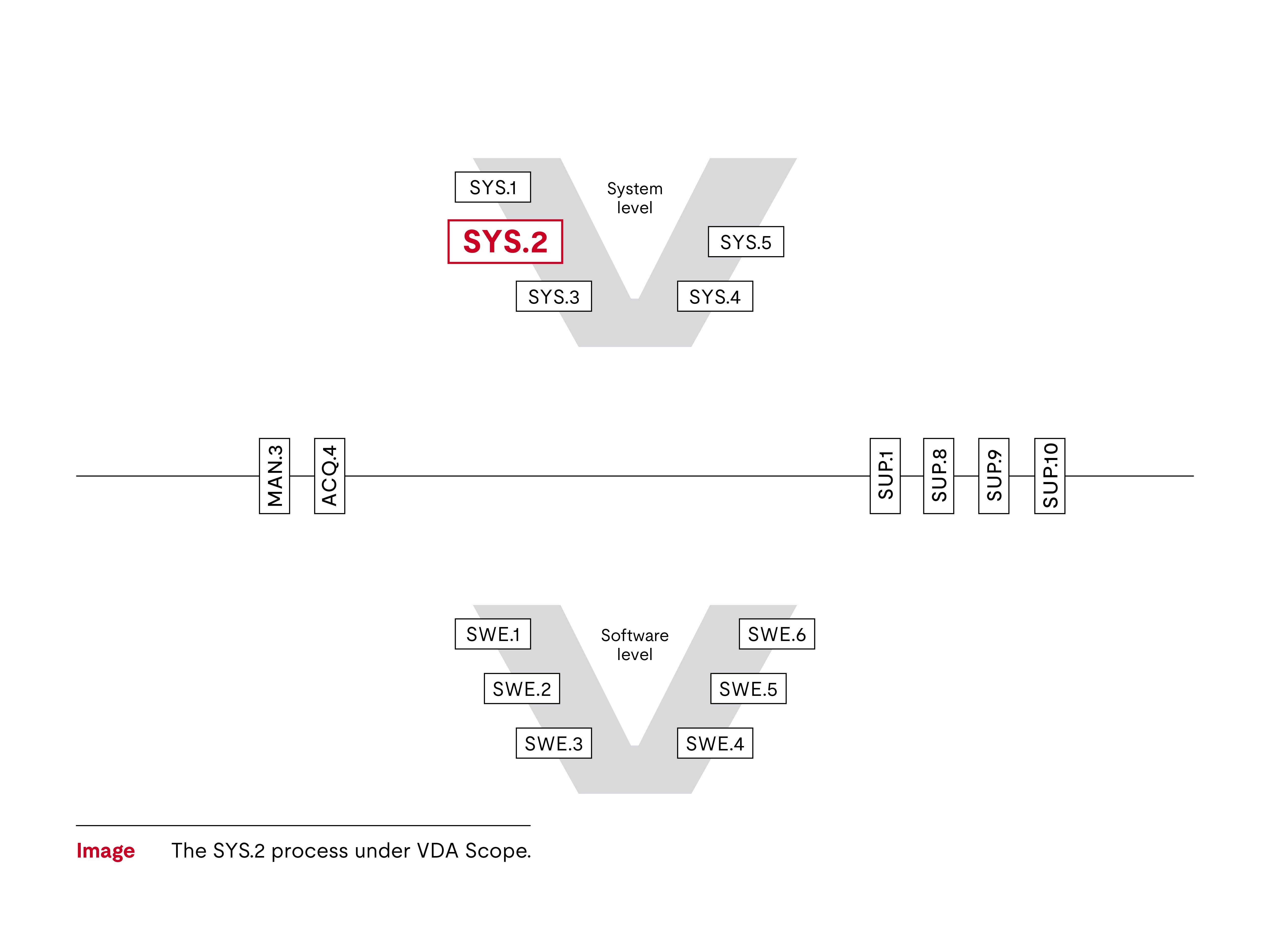
Process ID: SYS.2
Process group: System Engineering
Automotive SPICE® is a trademark of VDA QMC.
The System Requirements Analysis process in Automotive SPICE® (also known as SYS.2) can help your organization transform defined stakeholder requirements into a set of system requirements that will guide the design of the system.
In any given project, it is important to deliver the agreed results on time, within budget and in the quality required by the customer. Although customer requirements continue to apply, failure to document system requirements may cause functionality to be overlooked or customer expectations to be misinterpreted. This can lead to increased effort, costs and delays, or even false starts and additional development cycles.

The following are the most important aspects of System Requirements Analysis in Automotive SPICE®.
The importance of structured System Requirements in ASPICE
One important reason to document system requirements is the need to consider more than customer expectations. Most systems must meet standards, norms and other regulations that increase the number of requirements. For this reason, the process describes them as stakeholder requirements. Mapping stakeholder requirements to system requirements that reflect an internal view of the system is helpful for documentation purposes. The system requirements in turn form all downstream processes, including system architecture, and the basis for the system qualification test.
The system requirements describe the system as the "what" — what the system should do, not how the system should do something.
Part of this approach is also to structure the requirements in such a way that they are meaningful for the project organization and support the distribution to different areas. This helps establish that each development discipline understands the relevant requirements.
Typically, requirements management is supported by appropriate tools, such as a requirements database.
Organizational structure to support system requirements
It can be challenging for employees to support the definition of system requirements because a systems engineer must be skilled in multiple areas. For example, to develop a mechatronic system such as power steering, the engineer must have a deep understanding of mechanics, electronics and software development. If this expertise is not available in a single role, assembling a cross-domain team responsible for jointly defining system requirements may be a reliable solution.
The importance of analyzing system requirements
To begin, the requirements should be analyzed for feasibility or risk, and these two are closely linked. Without assessing the feasibility of a requirement, there is an inherent risk because it may take time to find a solution if one is available. Another topic to analyze is testability. Testers are often asked to review the requirements, and this analysis should also cover the technical implications. This includes the assessment of dependencies between requirements.
One example of this could be the close function of a window regulator ECU. The close function requires the windowpane to slide upwards until the window is closed. However, there is a contradictory safety function, the anti-pinch function, which is designed to prevent fingers from getting caught when the window is closed. There is an obvious interdependence and a mutual technical implication between these requirements, and this should be considered in the context of the analysis.
Finally, the analysis should also cover business aspects of the requirements, including how the implementation of the various requirements affects cost and timeline.
Automotive SPICE® does not specify where this information should be documented. The first part of the analysis (feasibility and risks) could be included in the requirements database, the technical implications in corresponding and linked change requests, and business impact in existing project management tools.
Traceability and consistency in requirements management
Ensuring traceability and consistency between system requirements and stakeholder requirements remains essential. Traceability can be established through traceability matrices or other manageable means that are supported by an organization’s tool landscape.
The purpose of traceability is to:
- Support consistency checks, such as verifying the completeness and accuracy of the system requirements.
- Support the impact assessment in case of change requests or deficiencies.
- Support the reporting of stakeholder expectations.
Consistency means confirming the completeness and correctness of system requirements against the stakeholder requirements. System requirements should cover stakeholder requirements correctly and completely.
Why choose UL Solutions Software Intensive Systems for Automotive SPICE® support?
UL Solutions Software Intensive Systems can support automotive original equipment manufacturers (OEMs) and suppliers in:
- Achieving the required capability levels within key development processes.
- Systematically improving existing workflows and methods.
- Evaluating the status of process improvements through formal assessments and gap analysis.
- Fulfilling the requirements of Automotive SPICE® in harmony with security, functional safety and agile methods.
- Training staff and assessors.
Learn more about the Automotive SPICE® System Requirements Analysis process
To further your understanding of the Automotive SPICE® System Requirements Analysis process (SYS.2), watch our video.
Get connected with our team
Thanks for your interest in our products and services. Let's collect some information so we can connect you with the right person.
